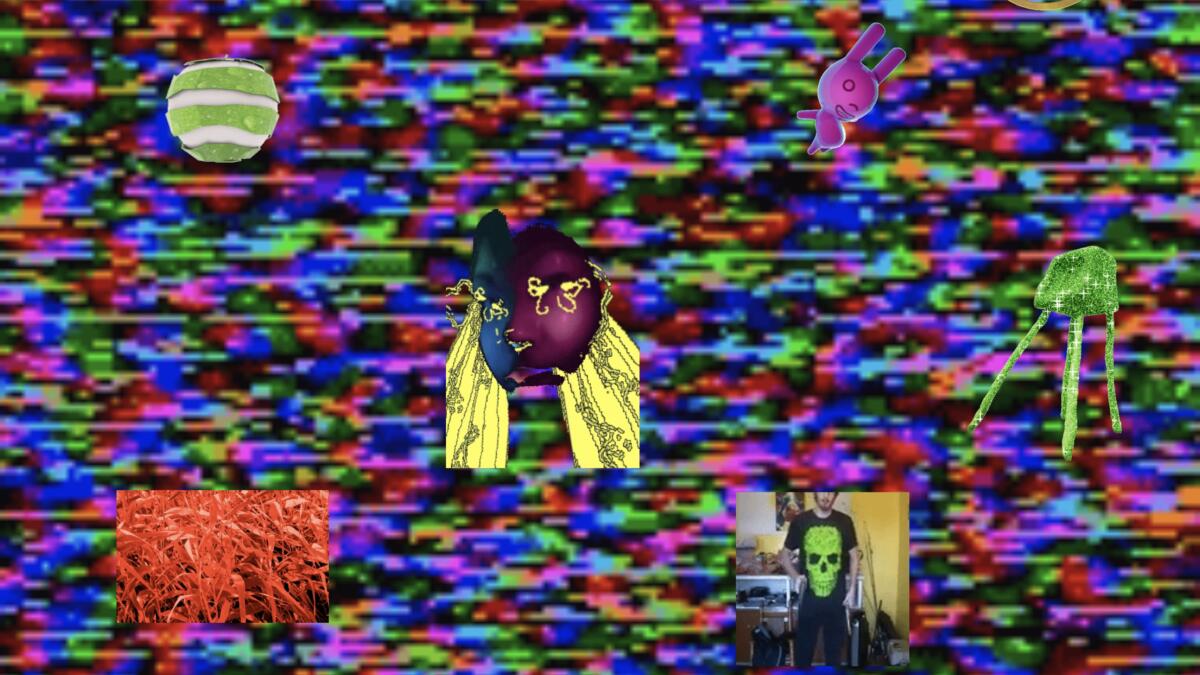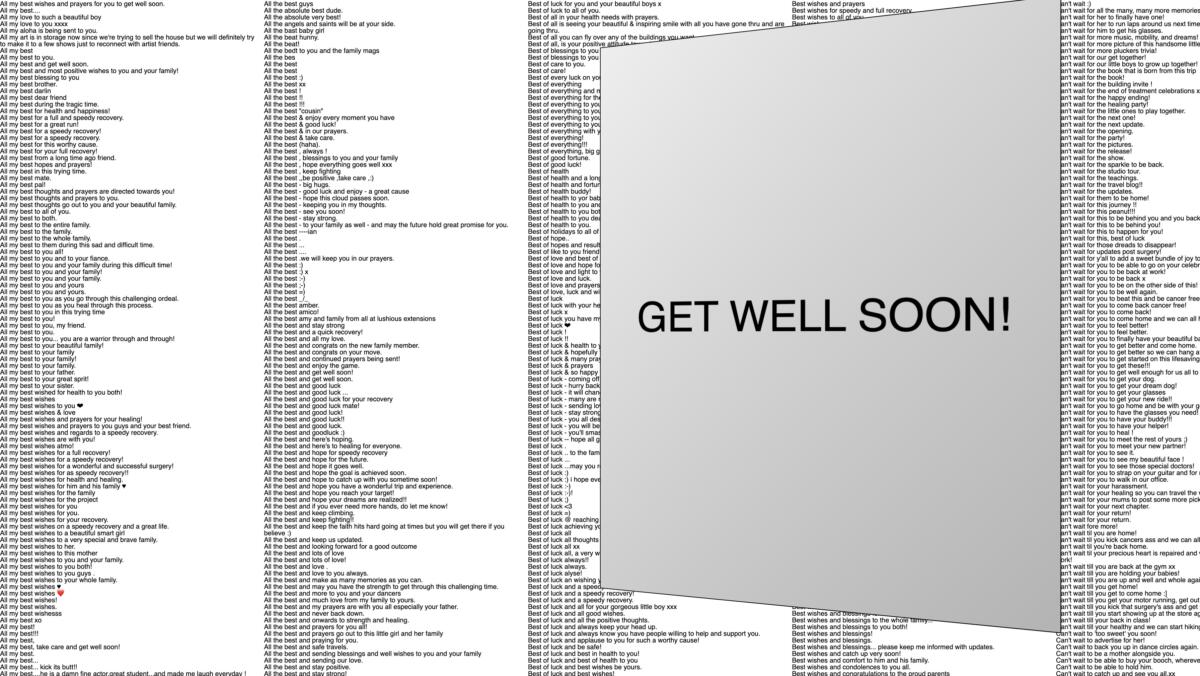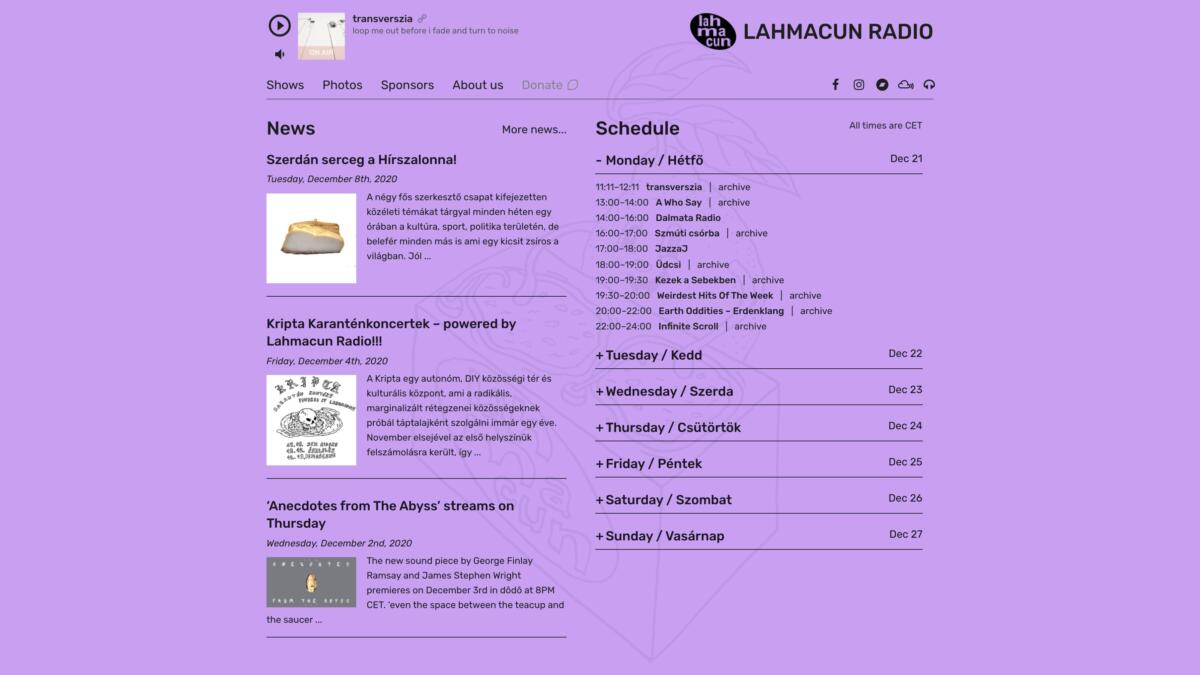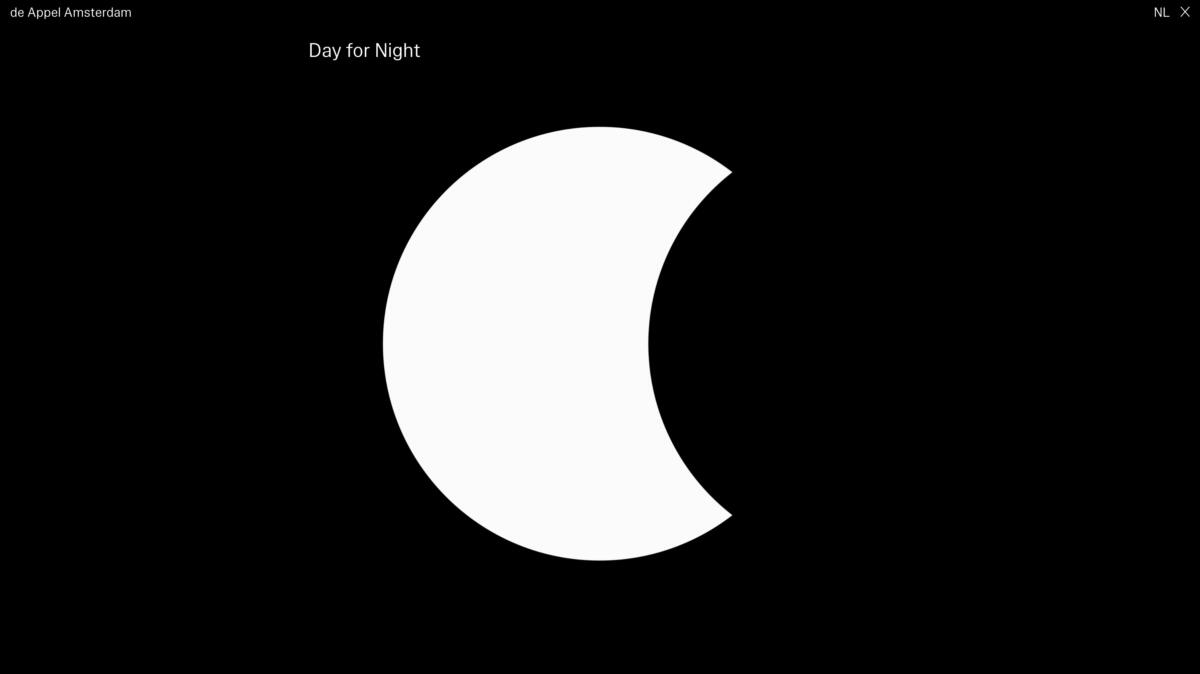
While the internet as-site is not a new phenomena, this year more so than any before has shown us what a critical role it has come to play in our lives as a global community. We posed a very open-ended question to a few cultural producers who work closely with this space-as-site, in search of the best use of internet space. Not explicitly linked to pandemic-inspired IRL diversions, this list of recommendations reflects a range of projects, performances, archives, exhibitions, and communities, and is a small celebration of the world that calls this critical space of the Internet, home.
***
Kathryn Zazenski
Net-Art Anthology is a compendium of digital projects/net art from the 1980s-2010s, developed and curated by RHIZOME.
“Digitally-rooted and virtual-first”, Dark Study is an art-focused experimental program that rebalances the pedagogical system. Where the “dynamic action of thinking, unthinking, and rethinking, takes priority over investment in one’s singular identity as a thinker.”
An online tv platform featuring a livestream of digital art, music & culture, hosted by The Wrong.
***
Łukasz Horbów | Self-House Residency
EXILE Gallery – Coloring Quarantine
My favorite project during the recent lock-down was “Coloring Quarantine” organized by EXILE Gallery. They collected drawings of artists from all over the world and made them available for printing and coloring at home.
Anna Zaradny – THE SOUND OF A DISTANCED BODY
Another lock-down favorite is Anna Zaradny’s three-part video “THE SOUND OF A DISTANCED BODY”
Michalina Sablik, Aleksandra Liput – A Dream Within a Dream
“A Dream Within a Dream” is also a fantastic exhibition that takes place in a beautiful garden, realized by the curatorial duo Michalina Sablik and Aleksandra Liput (also known as “Dzidy”).
Tom Milnes | Digital Artist Residency
An online exhibition curated by Faith Holland, Lorna Mills, and Wade Wallerstein featuring 100+ artists with moving image practices. A truly staggering display of talent and a vast plethora of visual production with a wry sense of critical bite against the shock of networked media.
Cyber Sanctuaries by Specter World
A charming show which aims to uncover a connection between the media technological and the spiritual. Engaging collaborations such as George Jasper Stone and Suzannah Pettigrew’s IFSR shine, as a flickering centre-point of the exhibition’s deep, ethereal desire for enlightenment via technology.
Wretched of the Screen
The overbearing imposition of the screen has had a major impact on us over the past 9 months. This show chimes with issues raised by Hito Steyerl, forming a scathing assessment of the socio-cultural implications of image production with digital media, and our dependence on screen-based technology. The show culminated in an IRL exhibition at Oxford’s Magdalen Art Space in February, before the lockdown began. Seems like so long ago!
***
Yane Calovski | press to exit project space
This year, there has been one incredibly stand-out project: “Collective Domain of Cultural Memory“. In all honesty, this project has been a highlight for us because of its content and critical discourse since its beginning in 2018. It makes our list now, in 2020, because its conclusion was diverted entirely online. Scheduled to take place in May 2020 in Amsterdam, the final symposium, exhibition, and residency program were migrated to a new site dedicated to the program, called In the pause of a gesture there might be an echo. Curated and organized by our partners, Anastasija Pandilovska and Marjoca de Greef of the art organization Suns and Stars, the main objective of the symposium was “to explore how (artistic) practises coalesce with cultural heritage” and “to allow for various practices from the cultural domain to touch each other and to move from their own fields of interests.” Presentations, dialogues, videos, conversations, books, everything was presented skillfully and clearly and it made for a truly invigorating experience. The website they prepared has a very particular design that feels like you are moving freely through an archive, discovering various content from artist videos, conversations, texts and images, without being overwhelmed. It would be unfair to highlight only one, so instead we want to list all the contributors and congratulate them all for their fantastic solidarity and the creativity that they manifested: Alena Alexandrova / Nataša Bodrožić / Leroy de Böck / Jeroen Boomgaard / Yane Calovski / Lucy Cotter / Doplgenger / Marjoca de Greef / Rumiko Hagiwara / Hristina Ivanoska / Sarah van Lamsweerde / Aram Lee / Anna Magyary / Luiza Margan / Alina Ozerova / Anastasija Pandilovska / Antonis Pittas / Ivana Vaseva / Richtje Reinsma / Liza Witte / Marianna van der Zwaag.
Personal Object at KOHTA
(for guided video tour click here)
I had the great honor of having a solo exhibition Personal Object at KOHTA in Helsinki curated by Anders Kreuger, one of the most generous, insightful and curious curators I have ever worked with. The show opened on March 11th and not long after, it became obvious that the lockdown was imminent and would affect the show. The response of the curator was to record a guided video tour and extend the show for an additional 3 months. He also initiated a redesign of their site and highlighted a section called Essays that focused on critically revealing the practices of the exhibiting artists. This shift to publish a series of comprehensive texts online and making them available to the public was a great incentive and clearly a sign of our pandemic times.
Cortney Lane Stell | Black Cube
In many ways, I believe it was very natural for the art world to make itself present through the Internet at this time. It’s a space where most of us are connected (or at least around 80% of the developed world has this type of online access according to wiki). Most museums seem to be offering virtual tours, social media challenges (think of the #MetTwinning), access to collections databases, virtual exhibitions, and so on and so forth. These experiences largely feel like marketing endeavors and rarely leave me with any semblance of an art experience. I think part of it is the flattening space of the internet where behaviors like scrolling, commenting, liking, and partial attention spans place art within the stream of everything else. I find it difficult to find the space of reflection and curiosity – which is how I typically digest IRL art experiences. Not to say that it isn’t possible, it just exists in this leveled space that is difficult to slow down and not drift. To put it simply, I really get nothing from looking at paintings in virtual spaces aside from a hollow disconnected feeling.
That said, there are artworks that have been, and continue to be, built for the Internet – for those, this is a great moment for increased attention (think of the kind of Net Art that Rhizome promotes, game art, some video work). I can count the interesting online exhibs on one hand; in particular, the Chronus Art Center put together a lovely virtual exhibition titled WE=LINK that features net-based art. I am particularly in love with Tega Brain and Sam Lavigne’s contribution Get Well, which is a colossal e-card that sources well wishes from medical campaigns on gofundme.com. Also, the expanded online platform for the exhibition Slow Life, is a timely treat with lots of content. It’s also been great to see some Net Artists review old works under quarantine such as John Rafman’s recent revisit of a 2008 project, Nine Eyes, which is a collection of Google street view images. Google has gathered new map images and in revisiting, he has found some striking scenes. Also, orgs like The Kitchen are featuring video documentation of historic performance art!
Kamil #2 | Gallery Śmierć Człowieka
Tracking trends in digital aesthetics is my daily bread, but in 2020, this process, or perhaps I should say the habit, changed. The sudden turn of our civilization towards the internal, yet public world which is the Internet, gave me a stomachache. Polish ministerial grants to support digital culture created a micro-world of projects, the effect of which has been disappointing. However, if I were to allow myself to present three interesting projects, I would use a timeless vector because the nature of the Internet, which is often misunderstood as a place where things are kept for eternity (millennium hope), contains a grain of truth. The Internet is a place where things (data) do not have a time vector (everything is both current and out of date).
The first project comes from 2017 and is a site that uses the classic iphone ringtone Marimba Ringtone in relation to the work of Steve Reich. The effect he discovered and used in his work the precursor of electronic music was transformed into a seven-second bell. The result of this work is an infinite piece of music that can be heard on the site: https://stevereichiscalling.com/
The second project comes from 2020. “A Café is a Café is a Café” features Zuzanna Bartoszek, Agata Kus, Małgorzata Markiewicz, Dominika Olszowy, and Paulina Włostowska. The attitude of the creators and artists shows the awareness of our connections and culture within the digital world. The exhibition breaks the cycle of tradition, as it was created in something that resembles a dollhouse. The cycle is broken yet again because it was created only for the documentation, which can only be viewed on the Internet. The borderline and simplicity of this exhibition is worth attention.
The third project is more of an outsider-art project: https://www.instagram.com/p/CAqwYx6l_rt/ (author: tytus_nie). This 3D story for children will not bring anything to the canon of art, it is even a bit cliché, but it contains something which is really difficult to identify (watch it thru the end), something that perhaps all artists are envious of.
Rahel Ana Molnar+Zsófia Kókai | ALTERUM
An online video-game, exhibition, and immersive digital installation with the contribution of artists and collectives BCAA System, galen tipton, h5io6i54k, Jonas Gruska, Matyas Malac, medieval cortex, and ver.
“Solo Show” is a platform presenting offsite exhibitions. The project began during the 2020 quarantines, showcasing installations made in artists’ homes – centering, in particular, artists who had already navigated creative structures in isolation. As a convergence of two artist-run projects, we continue to evolve as a curated publishing outlet for offsite exhibits and other independent projects. Solo Show is organized by Underground Flower with Rhizome Parking Garage and partners with Harlesden High Street.
“Body Archive Project” works as a showcase and digital online archive. Through a digital presence on the website, the exhibitions are given a space where knowledge is conveyed, new contextualizations are permitted and are further woven beyond a purely physical location. Body Archive Project carries the gesture of activist curating within itself. Artistic expressions and discourses overlap with different formats. The Body Archive Project makes no claim to artistic dictation, is open to exploring boundaries, interdisciplinary approaches, without rejection, but not without direction.
An online music & more radio from Budapest.
A net-magazine dedicated to contemporary art, initiated by younger generation of art historians and artists, with the notion of puncturing specific artistic phenomena inside contemporary artistic discourses. Tag is an experiment for liberalisation of individual perspectives and stances of the emerging generations, a range for revision of the meaning and critical overview of the actual art practice.
***
Danai Giannoglou, Vasilis Papageorgiou | ENTERPRISE PROJECTS
EP Journal is a publishing initiative by Enterprise Projects in the form of an online publication of newly commissioned theoretical and research essays, in both Greek and English. The reader can browse online, download or print each issue, presented with a design that reflects the needs of every text. EP JOURNAL creates a platform for Greek-speaking writers and curators which becomes a tool, a reference, a vocabulary, a read for a wider audience.Enterprise Projects Journal has been active on an (ir)regular basis since June 2018.
Day for Night
De Appel, Amsterdam
What does it mean to perceive an artwork – and the artist who made it – in different light? As de Appel reopens amidst profound social and environmental change, we rethink our future program and use the present to connect to makers of art and history – themselves connected to Amsterdam.Introducing one artist, one work at a time, this series of focused presentations unfolds throughout Summer 2020. Each is accessible by appointment in the daytime and via livestream outside gallery hours. In this way we restart the simple ritual of welcoming the public to de Appel at our home address of Schipluidenlaan 12. And we also try to understand the altogether different spacetime that connects what we do to anyone around the world with access to www.deappel.nl while we redevelop our website.Our night may be your day, and vice versa. It’s that simple but also not simply opposed. The situation allows for close encounters with works and their makers during the slow fade from day to dusk to night to dawn and again towards daylight.
less than 300 dpi, 15 seconds cinema
3137, Athens
After the summer, 3137 opens the artistic season with the exhibition less than 300 dpi, 15 seconds cinema that will be entirely presented on Instagram. We have been meaning to experiment with this form of presentation since last year, and today rapid developments in public health, social distancing and the dominance of digital media in the fields of communication, work and entertainment make it more relevant than ever.The works of the exhibition will be presented in rotation in the Stories of the 3 137 Instagram account. Each work will be online for 24 hours. The works were especially created following the format of Instagram Stories, with short and alternating shots and with a maximum duration of 15 seconds, i.e. the maximum duration of an Instagram Story. Our aim is to infiltrate the popular platform, by creating a rule of cinematic narration.Works by: ATH Kids, Santra Odette Kipriotaki, Daphné Hérétakis, Penelope Koliopoulou, Eva Stefani, VASKOS, Ahmet Ogut, Joshua Olsthoorn.
Viktoria Draganova | Swimming Pool
During the recent months we needed to discover the digital realm as space for research and commoning that grows as a variant infrastructure for action. This is generally not an easy task as it requires not only good design thinking, but also the long-term programming of a whole environment. Indeed, it requires a type of thinking that institutes an invigoration of the process, enlivens collectivities, allows for invention, and resonates with its situatedness, which will always be beyond the digital. For this reason, I’ve selected a few research-cum-action platforms that were launched over the last few weeks.
Distancedifferenceduration is a new platform that is invested in topics like „Unlearning Landscapes”, „Interspecies togetherness”, „Border Regimes” and „Collectivity on Stage” and relates to both individual and collective research. „Much like the coronavirus”, the platform describes itself, „it questions boundaries of who ‘we’ are, giving rise to alternative configurations of ‘planetary thought’ and planetary being and becoming.”. I learned about it from researcher and curator Maragrida Mendes, the platform is run by the Center of Research Architecture MA аt Goldsmiths, London, under the guidance of Susan Schuppli, Lorenzo Pezzani and Ifor Duncan.
MEANDER is a web platform initiated by MEANDER Society for Ecological Thinking and Artistic Practice (NO/DK) and developed in collaboration with Ensayos (CL/ FR/ US), Instituto Procomum (BR) and ODD (RO/IN). As it informs, “it looks to present and connect meaningful initiatives from around the world, in an attempt to take its place in what should be humankind’s primary and collective action right now”. I learned about it from curator, artist and writer Cristina Bogdan, the founder of ODD, just in time for the day-long launch event on 12.12 that was hosted by the artist-run space Tenthaus in Oslo and can be still watched online.
The Bureau of Care is initiated by State of Concept, Athens and its founder and friend iLiana Fokianaki to gather artists, activists, writers and social workers to script and visualise the foundations for a European post-pandemic politics of care. Aiming for the futures of “care-ful practice”, The Bureau wishes to act on the possibilities enabled by the voices that speak from legacies of countless forms of collective care: healers, care workers, mothers, social workers, educators, cultural workers. It will consist of three components: a series of gatherings (online & physical), a handbook, and a physical bureau – the web is still under construction, but there are already many words spoken and shared around it, so while waiting go and check the fb page.






